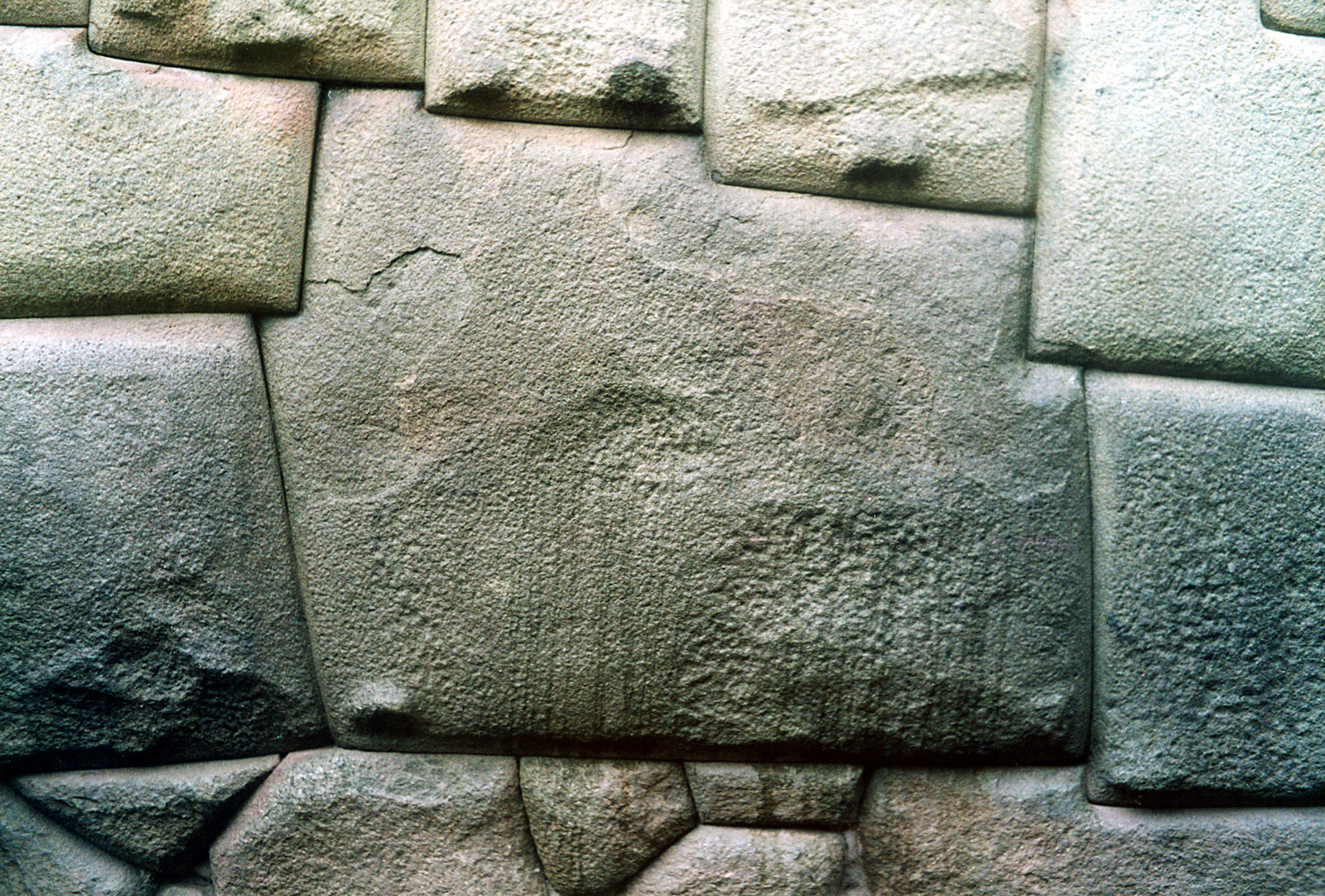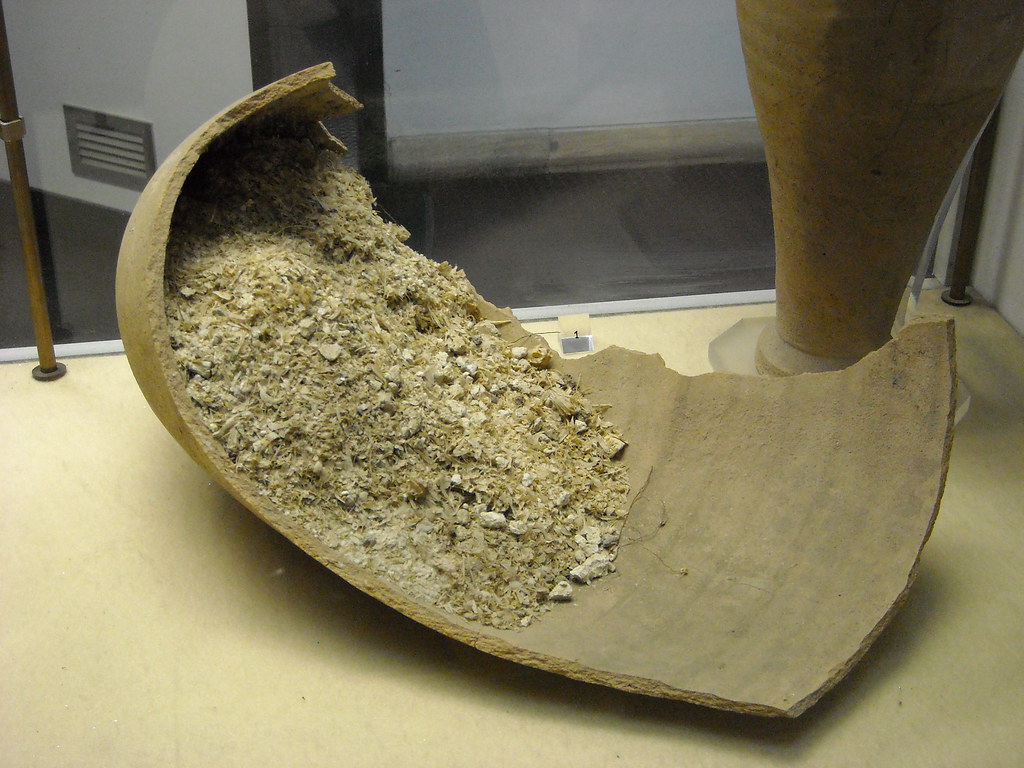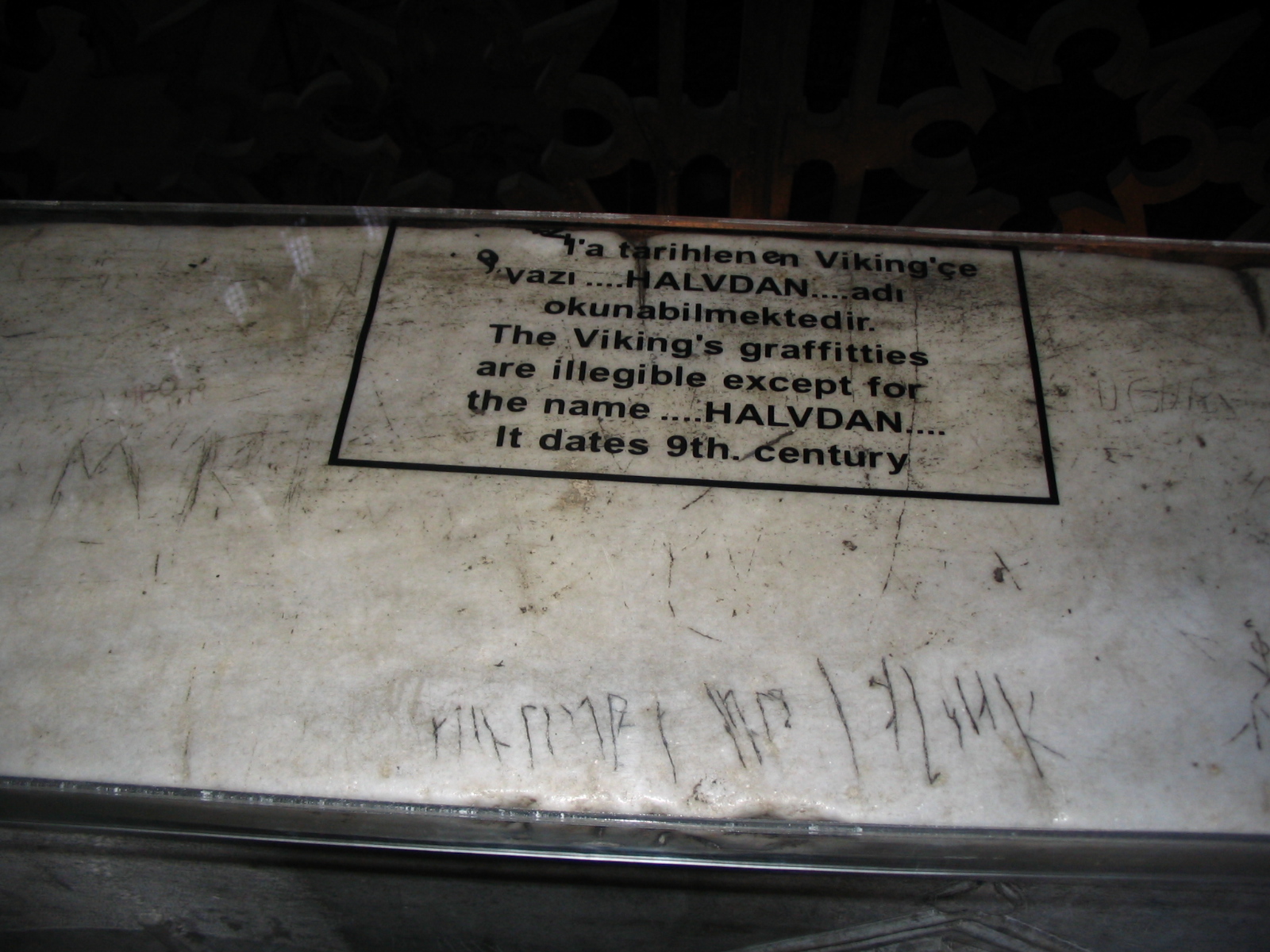When we think of statues and buildings of the classical period, we tend to imagine white marble; scientists in recent years have discovered that it is, in fact, most likely that many of the buildings and statues were painted and, probably, adorned with jewelry.
 White marble has been the norm ever since the Renaissance, when classical antiquities first began to emerge from the earth. The sculpture of Trojan priest Laocoön and his two sons struggling with serpents sent, it is said, by the sea god Poseidon (discovered in 1506 in Rome and now at the Vatican Museums) is one of the greatest early finds. Knowing no better, artists in the 16th century took the bare stone at face value. Michelangelo and others emulated what they believed to be the ancient aesthetic, leaving the stone of most of their statues its natural color. Thus they helped pave the way for neo-Classicism, the lily-white style that to this day remains our paradigm for Greek art. left: Augustus of Prima Porta, 1st century AD
White marble has been the norm ever since the Renaissance, when classical antiquities first began to emerge from the earth. The sculpture of Trojan priest Laocoön and his two sons struggling with serpents sent, it is said, by the sea god Poseidon (discovered in 1506 in Rome and now at the Vatican Museums) is one of the greatest early finds. Knowing no better, artists in the 16th century took the bare stone at face value. Michelangelo and others emulated what they believed to be the ancient aesthetic, leaving the stone of most of their statues its natural color. Thus they helped pave the way for neo-Classicism, the lily-white style that to this day remains our paradigm for Greek art. left: Augustus of Prima Porta, 1st century AD
By the early 19th century, the systematic excavation of ancient Greek and Roman sites was bringing forth great numbers of statues, and there were scholars on hand to document the scattered traces of their multicolored surfaces. Some of these traces are still visible to the naked eye even today, though much of the remaining color faded, or disappeared entirely, once the statues were again exposed to light and air. Some of the pigment was scrubbed off by restorers whose acts, while well intentioned, were tantamount to vandalism.
 Ancient texts provide detailed information about the pigments used in antiquity. Actual pigment remains may be identified by various techniques, including polarized light microscopy, X-ray fluorescence and defraction analysis, and infrared spectroscopy. Most pigments were of mineral origin, such as red and yellow ocher, the bright red mercury sulfide cinnabar, the copper carbonates azurite (blue) and malachite (green), and the synthetic Egyptian blue, a copper calcium silicate. White was derived from lead or lime, black from carbonized bone or other materials. The use of organic pigments, such as red madder and murex shell purple, is also attested. Binding media were
Ancient texts provide detailed information about the pigments used in antiquity. Actual pigment remains may be identified by various techniques, including polarized light microscopy, X-ray fluorescence and defraction analysis, and infrared spectroscopy. Most pigments were of mineral origin, such as red and yellow ocher, the bright red mercury sulfide cinnabar, the copper carbonates azurite (blue) and malachite (green), and the synthetic Egyptian blue, a copper calcium silicate. White was derived from lead or lime, black from carbonized bone or other materials. The use of organic pigments, such as red madder and murex shell purple, is also attested. Binding media were
organic and tend to be harder to identify; there is evidence for egg, casein, and wax.
left: “Cuirass Torso” (reconstruction), Acropolis, 460 BC
The example of the Cycladic statuettes shows that sculpture in the ancient Mediterranean received colorful decoration from very early on. In Egypt, wall reliefs and statues of stone and wood were painted in a range of colors similar to that of the tomb paintings. In Mesopotamia, the palaces of the Assyrian kings were decorated with extensive wall reliefs, whose colors are by now almost entirely faded. Wall paintings and decoration executed in glazed terracotta, as on Babylon’s famous Ishtar Gate, give us some idea of the original effect. Following the Assyrian example, painted reliefs were an integral part of palace architecture in the Achaemenid Persian Empire (550–330 BC). A fragment of a relief from Persepolis, one of the empire’s capital cities, preserves visible traces of red, green, and blue pigments.
Most ancient sculpture, whether depicting human or divine subjects, is incomplete without color. Only with the Renaissance did white or monochrome sculpture become a paradigmatic form of artistic expression. As we now know, this phenomenon would have startled ancient sculptors such as Praxiteles—just as the color reconstructions of ancient statues startle us today.
 White marble has been the norm ever since the Renaissance, when classical antiquities first began to emerge from the earth. The sculpture of Trojan priest Laocoön and his two sons struggling with serpents sent, it is said, by the sea god Poseidon (discovered in 1506 in Rome and now at the Vatican Museums) is one of the greatest early finds. Knowing no better, artists in the 16th century took the bare stone at face value. Michelangelo and others emulated what they believed to be the ancient aesthetic, leaving the stone of most of their statues its natural color. Thus they helped pave the way for neo-Classicism, the lily-white style that to this day remains our paradigm for Greek art. left: Augustus of Prima Porta, 1st century AD
White marble has been the norm ever since the Renaissance, when classical antiquities first began to emerge from the earth. The sculpture of Trojan priest Laocoön and his two sons struggling with serpents sent, it is said, by the sea god Poseidon (discovered in 1506 in Rome and now at the Vatican Museums) is one of the greatest early finds. Knowing no better, artists in the 16th century took the bare stone at face value. Michelangelo and others emulated what they believed to be the ancient aesthetic, leaving the stone of most of their statues its natural color. Thus they helped pave the way for neo-Classicism, the lily-white style that to this day remains our paradigm for Greek art. left: Augustus of Prima Porta, 1st century ADBy the early 19th century, the systematic excavation of ancient Greek and Roman sites was bringing forth great numbers of statues, and there were scholars on hand to document the scattered traces of their multicolored surfaces. Some of these traces are still visible to the naked eye even today, though much of the remaining color faded, or disappeared entirely, once the statues were again exposed to light and air. Some of the pigment was scrubbed off by restorers whose acts, while well intentioned, were tantamount to vandalism.
 Ancient texts provide detailed information about the pigments used in antiquity. Actual pigment remains may be identified by various techniques, including polarized light microscopy, X-ray fluorescence and defraction analysis, and infrared spectroscopy. Most pigments were of mineral origin, such as red and yellow ocher, the bright red mercury sulfide cinnabar, the copper carbonates azurite (blue) and malachite (green), and the synthetic Egyptian blue, a copper calcium silicate. White was derived from lead or lime, black from carbonized bone or other materials. The use of organic pigments, such as red madder and murex shell purple, is also attested. Binding media were
Ancient texts provide detailed information about the pigments used in antiquity. Actual pigment remains may be identified by various techniques, including polarized light microscopy, X-ray fluorescence and defraction analysis, and infrared spectroscopy. Most pigments were of mineral origin, such as red and yellow ocher, the bright red mercury sulfide cinnabar, the copper carbonates azurite (blue) and malachite (green), and the synthetic Egyptian blue, a copper calcium silicate. White was derived from lead or lime, black from carbonized bone or other materials. The use of organic pigments, such as red madder and murex shell purple, is also attested. Binding media wereorganic and tend to be harder to identify; there is evidence for egg, casein, and wax.
left: “Cuirass Torso” (reconstruction), Acropolis, 460 BC
The example of the Cycladic statuettes shows that sculpture in the ancient Mediterranean received colorful decoration from very early on. In Egypt, wall reliefs and statues of stone and wood were painted in a range of colors similar to that of the tomb paintings. In Mesopotamia, the palaces of the Assyrian kings were decorated with extensive wall reliefs, whose colors are by now almost entirely faded. Wall paintings and decoration executed in glazed terracotta, as on Babylon’s famous Ishtar Gate, give us some idea of the original effect. Following the Assyrian example, painted reliefs were an integral part of palace architecture in the Achaemenid Persian Empire (550–330 BC). A fragment of a relief from Persepolis, one of the empire’s capital cities, preserves visible traces of red, green, and blue pigments.
Most ancient sculpture, whether depicting human or divine subjects, is incomplete without color. Only with the Renaissance did white or monochrome sculpture become a paradigmatic form of artistic expression. As we now know, this phenomenon would have startled ancient sculptors such as Praxiteles—just as the color reconstructions of ancient statues startle us today.
 |
| “Young Roman,” 3rd century CE |
 |
| So-called “Peplos Kore,” original alongside reconstruction, Athens (540 BC |
 |
| “Lion from Loutraki” (reconstruction), Greece, c. 570–560 BC |












































